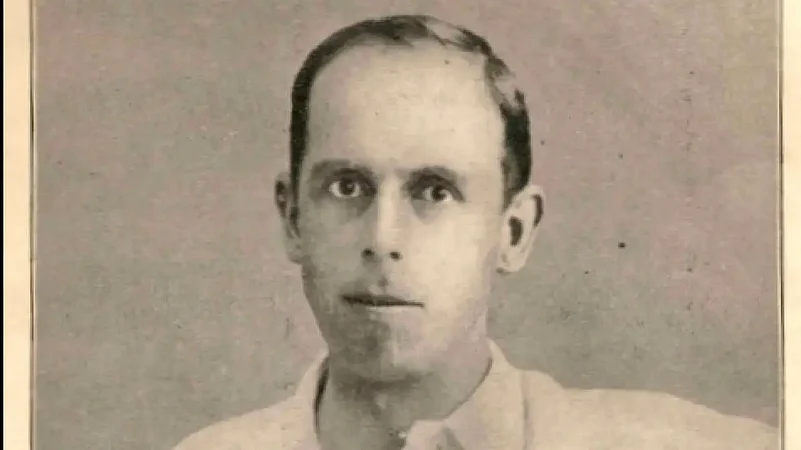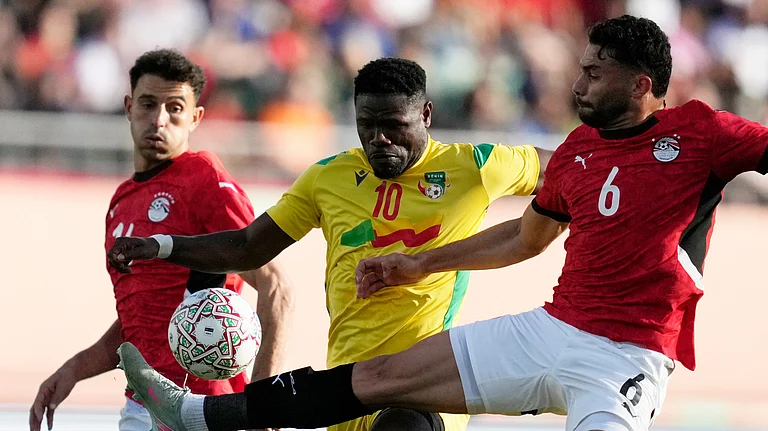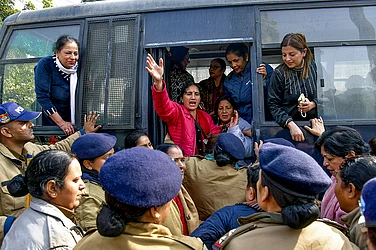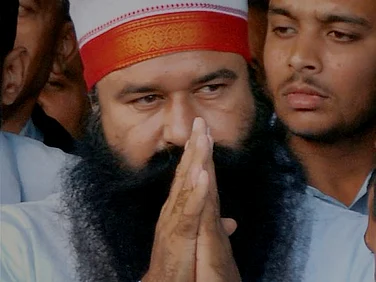Charles Freer Andrews
Lying on his deathbed in 1940, an Englishman said, "Mohan, freedom is not far away." These were the words of Charles Freer Andrews to Mohandas Karamchand Gandhi.
Andrews was instrumental in preparing Gandhi to return to India from South Africa. He joined the Cambridge Mission in 1904 to teach philosophy at St Stephen's College in Delhi. Frustrated by the racist treatment meted out to Indians by some British officers, he began to support India’s fight for Independence.
Andrews became involved in the activities of the Indian National Congress and helped resolve the 1913 cotton workers' strike in Madras. In 1917, when Gandhi launched the Satyagraha movement in Champaran, Andrews expressed his desire to go there and help him. But Gandhi wanted the people of Champaran to fight for themselves so Andrews joined the freedom struggle to make it stronger in other parts of the country. Freedom fighters like Gandhi, Tagore, Gokhale and Lala Lajpat Rai used to address him as Dinbandhu because of his work for the poor.
Gradually, Andrews turned into an Indian both in his spirit and deeds. Dhoti-kurta became his favourite dress and he used to introduce himself as an Indian. He raised his voice against the oppressive policies of the British. Andrews openly advocated for the rights of Indians settled in any part of the world. He visited South Africa several times, where he fought fiercely against inequality and unjust treatment given by British imperialists to Indians living there. It led the British to conspire against him.
Reginald Reynolds
A young British man left England in 1929 at the age of 24. He visited Gandhi's Sabarmati Ashram and gradually became one of Gandhi’s closest associates. The young Englishman was strongly opposed to the colonial policies of Britain, so he came to India to help the Indians. In March 1930, Gandhi appointed Reynolds to deliver a lengthy written statement to the British Viceroy, explaining the reasons for his movement against the British Raj.This letter is commonly known as 'Gandhi's Ultimatum'.
The letters of Gandhi-Reynolds written between 1929 and 1932 reveal Gandhi to be a political strategist as well as a spiritual leader. Reynolds formed an organisation in Britain called 'The Friends of India.' In 1931, he sold three of his Gandhi letters to Charles F. Jenkins who was a prominent British businessman and manuscript collector. "I want to help Indians by selling some of my most valuable assets," he told Jenkins.
Reynolds had all of Gandhi's letters and initially, he collected a lot of money by selling three letters. Later, those letters were kept in the British Archive. While staying with Gandhi in India, he strengthened the Independence movement through his writings. His vision for India was amazing. Reynolds wrote more than a dozen books on India and Gandhi. When his book 'The White Sahibs in India' was published in 1937, he raised the hackles of British officers.
In 1931, when Gandhi was lodged in Yerawada Jail, a cartoon by Reginal Reynolds was published in the Hindustan Times. It showed Gandhi behind bars and Lord Willingdon locking the doors of the prison with scores of Gandhis outside in the crowd. Its caption was — Lord Willingdon's Dilemma.
In his writings and letters, there is great resentment of British colonialism and a sense of hope that Indians should get freedom at the earliest. Reynolds, while on a trip to Australia, suddenly died at the age of 53 in Adelaide.
Michael John Carritt
One evening in the summer of 1936, a man arrived at a small studio in a crowded Bombay marketplace. He gave his name as Basheer and asked the people sitting in the studio where Mirajkar was. It caused chaos there. The people sitting in the studio thought that he was a police officer. In a hurry, all the shopkeepers ran away after closing the shops. That man was Michael John Carritt and the person he was looking for was SS Mirajkar, the prime accused in the Meerut Conspiracy case.
The shopkeepers later came to know that he had come not to arrest Mirajkar, but to help him. Carritt was an ICS officer and after completing his studies at Oxford, he decided to work in India. Shortly thereafter, Carritt was working for the British government and Indian freedom fighters at the same time. Even while working for the British government, he would provide secret information to Indian communist leaders.
Michael John Carritt is known as a British officer who took the side of the poor peasantry as Chief Magistrate in Asansol. He even allowed the distribution of 'illegal' pamphlets by the Bombay branch of the Communist Party of India and also worked to provide shelter to the revolutionaries fighting for the country’s freedom. His love and sympathy for the Indian people made him a soldier in the Indian freedom struggle. He had direct contact with Indian communist leaders such as Ajoy Ghosh, PC Joshi, SA Dange and SV Ghate.
Between 1935 and 1937, Carritt leaked several intelligence reports to his Indian comrades. During his posting in different areas of Bengal, Carritt was seen to be sympathetic to the cause of the farmers. The other British officers took notice of this and lodged complaints against him but he did not stop. In his report, Carritt wrote about how all residents of a village were brutally beaten up for the murder of an Englishman. He also wrote about how they were kept in detention camps and what kind of atrocities was committed against them while they were talking about their fields, crops, and taxes.
In 1939, Carritt began to fear that his British colleagues might kill him. So, he quit his job and joined the Communist Party. In 1940, he was accused of helping Indians and his pension was stopped. Carrit continued to come to India even after Independence. Later, he lived in Oxford. His autobiography A Mole in the Crown was published in 1985 and became an instant best-seller. The book underlines the tyranny of British rule through the eyes of an Englishman. He died in 1990 in Oxford at the age of 84.
Clive Branson
After the arrest of Congress leaders involved in the Quit India Movement, violent protests erupted at various places in the country. The soldiers of Gulunche camp in Pune were given the responsibility of restoring law and order in that area, but one of their officers refused to join the contingent. Not only this, he clearly said he felt that doing so was like waging a war against common people. His feelings and sympathies lay with the rebellious Indians.
On British Prime Minister Winston Churchill's allegation that the disturbances in India are a conspiracy of the Congressmen to help the Japanese, he said, "Churchill's speech on India was garbage and nothing else." He was a British soldier who came to India to follow the orders of his government. And he felt that his government and army committed atrocities here and Indians had the right to get freedom from it. The name of that man was Clive Branson.
Branson was born in India. His father was a British soldier in India who moved to England shortly after Branson was born. After coming to India, he wrote letters to his wife and in those letters, he narrated his feelings and the picture of India at the time. Other British officers would taunt him for his friendly attitude towards Indians by saying that it brought disrepute to the British. But he was unwavering in his support of the Indians. He also wrote his pain in a letter to his wife and said that "when these British soldiers visit the brothels here, does the prestige of the British increase? I cannot do that”.
India's poverty and helplessness had a profound effect on Branson. In a letter, he wrote to his wife that after 175 years of imperialism, the conditions in India have become horrifyingly hopeless and we should return as good friends. At the age of 37, Branson died during a battle in Burma. After Branson's death, his letters to his wife Naureen were published which introduced the world to a British soldier who loved Indians.
(The author is doing research on Indo-Europe relations in England)






















